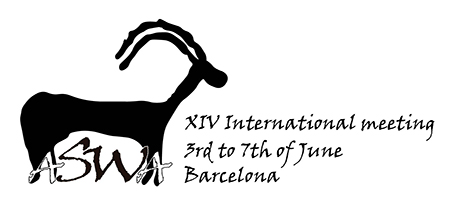The study of commerce has always been imperative to studying the ancient classical world and is of particular interest when coupled with extreme environments and periods of instability. We present unique first evidence for the role of fish, and Red Sea parrotfish (Scaridae) in particular, as traded goods during the transition between the Byzantine (4th-7th cent. CE) and the Islamic (7th-9th cent. CE) periods in the Negev Desert region of the southern Levant. The current study focuses on garbage dumps and abandoned houses excavated from three archaeological sites: Elusa, Shivta, and Nissana. These were uniquely positioned at the margins of the Byzantine Empire along the final stations of ancient trade routes linking the Red Sea to the Mediterranean Sea. Systematic fine scale sieving techniques were applied at the sites, allowing us to recover large, well preserved fishbone assemblages (N= 13,674).
Unique evidence of intensive trade systems comprising a large diversity of fish and representing diverse aquatic habitats, including the Mediterranean Sea, Red Sea, Nile River and possibly other freshwater sources, is presented. The discovery of Red Sea parrotfish (Scaridae) at all three sites was of particular interest.Although mentioned in ancient texts, references to Scaridae are often limited to gastronomic advice and esoteric ecological observations. Additionally, the anachronistic nature of these documents prevents determination of the original contexts and dates.
Analysis of the Scaridae remains revealed their role as flag species of the Red Sea and as essential trade goods in the Byzantine and Early Islamic economic systems. Furthermore, the presence of several Scaridae species, including Cetoscarus bicolor (Bicolor parrotfish), Chlorurus gibbus (Heavybeak parrotfish), Chlorurus sordidus (Daisy parrotfish), Hipposcarus herid (Candelamoa Parrotfish), Scarus ghobban (Bluebarred parrotfish), and Scarus niger (Dusky parrotfish), was noted. The study of skeletal element representation indicated the presence of complete skeletons. Fragmentation patterns of various bones (cleithrum, lower pharyngeal) exhibited a pattern typical of fish butchered for drying and salting. These results demonstrate that preserved fish were transported to the sites.
Estimates of Scaridae standard length and body mass for the three studied sites displayed a wide range of values, ~23-59 cm, and ~164-2,293 gr, respectively. The wide range of estimated body sizes indicates the use of non-selective fishing methods, still carried out by traditional fishing communities. This study shows, for the first time, that the Red Sea played a key role in classical Middle East trade systems, revealing high demand for fish goods.

 PDF version
PDF version
